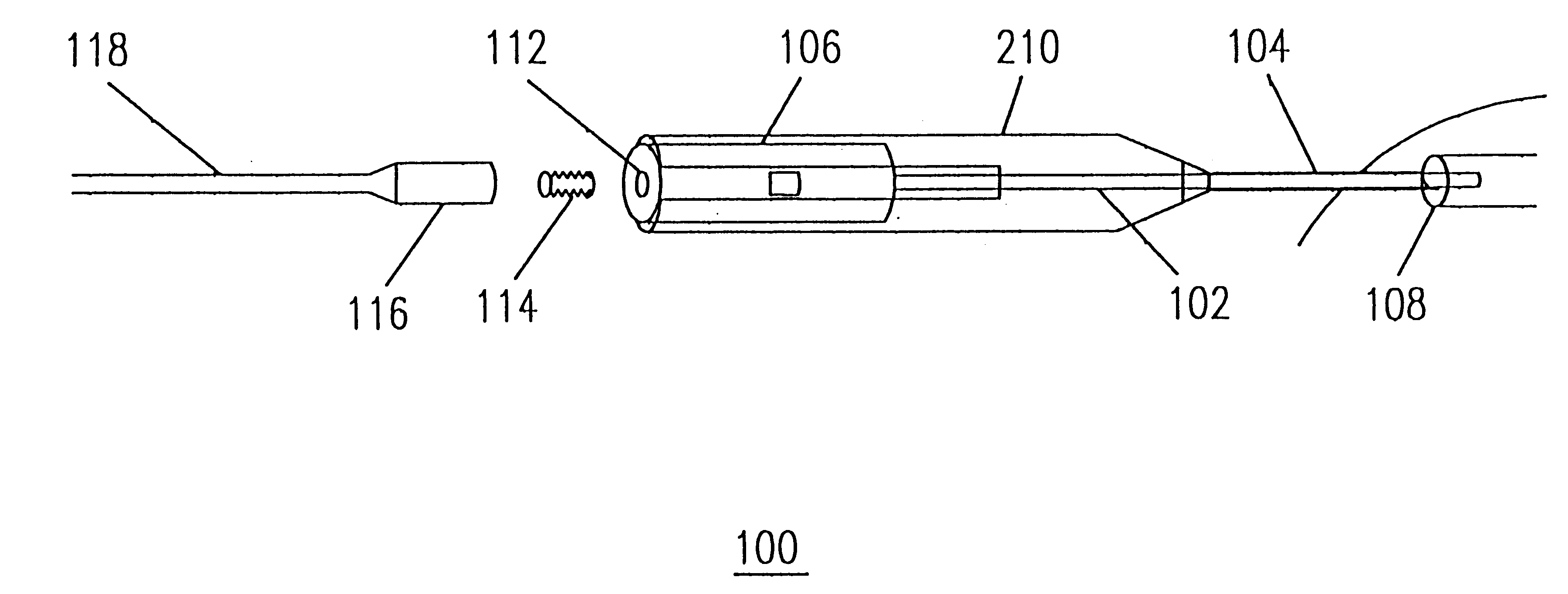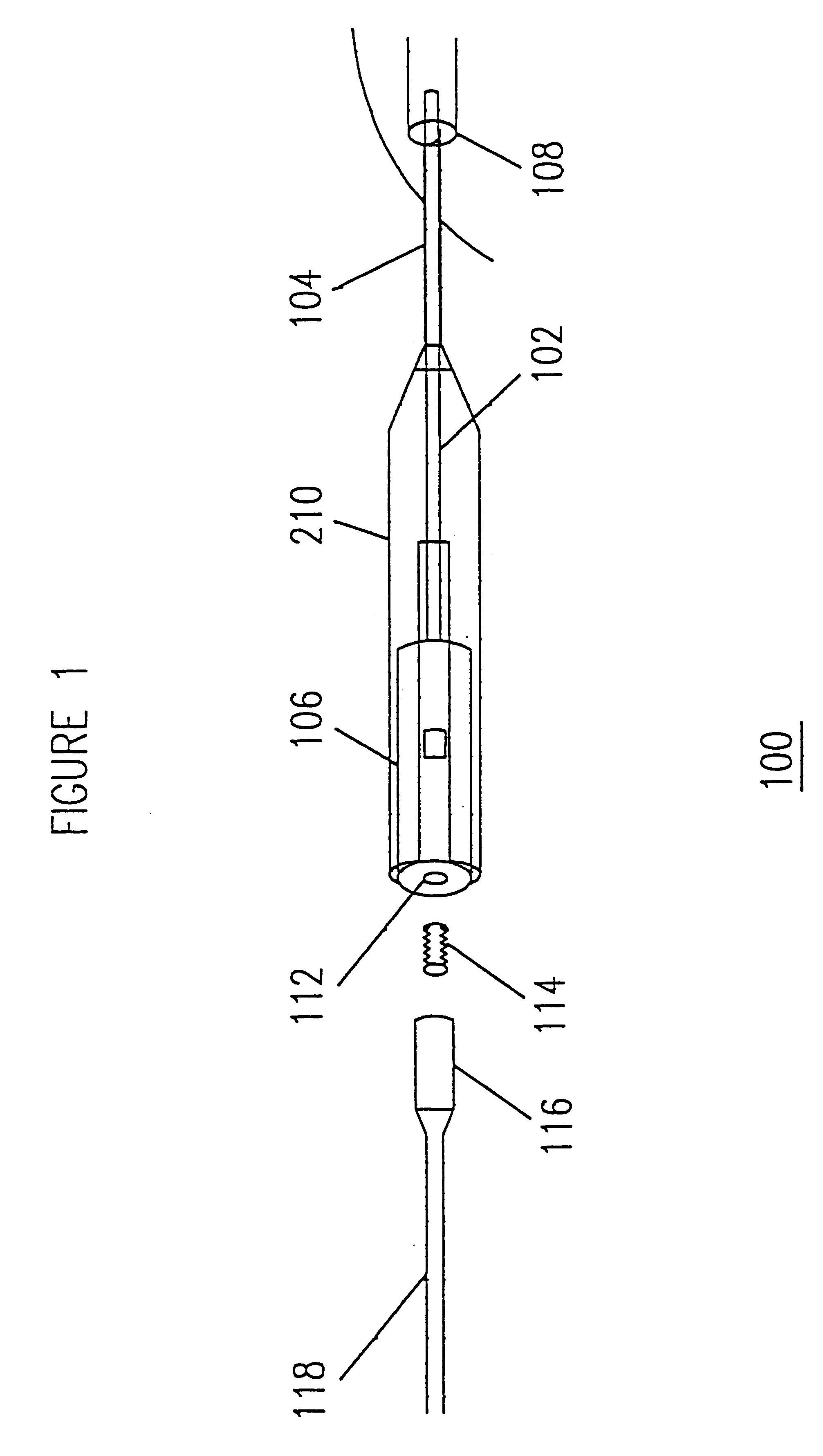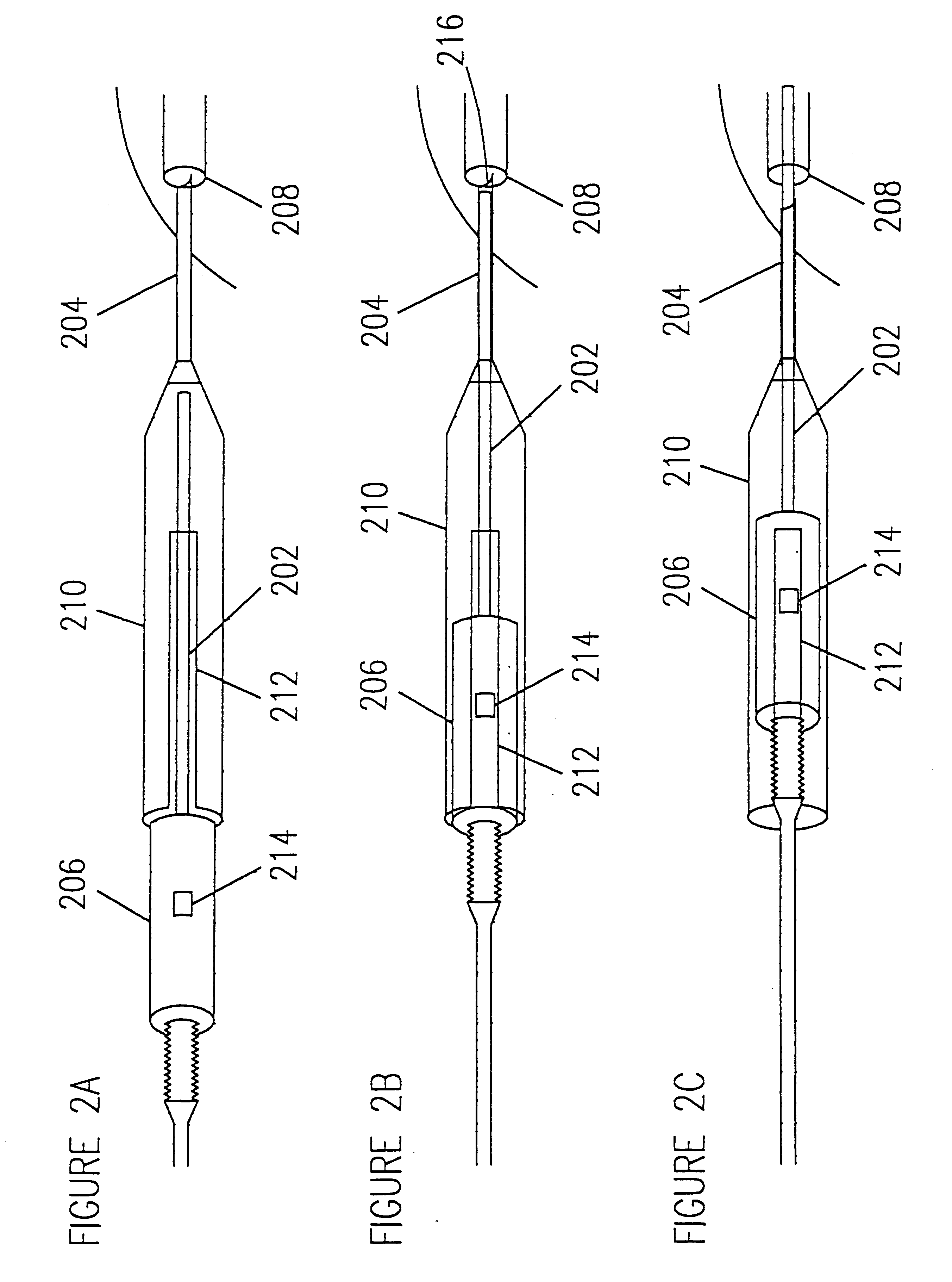Device and method for underskin laser treatments
- Summary
- Abstract
- Description
- Claims
- Application Information
AI Technical Summary
Benefits of technology
Problems solved by technology
Method used
Image
Examples
example 2
To obtain lifting or contracting of the skin, the device is inserted under the reticular derma or its lower border to induce a series of microscars. These microscars cause the reticular derma to contract. Contraction of the derma will tighten the skin surface.
If treatment is to be administered directly into the reticular derma then the device employs a 100-micron optical fiber used in conjunction with a 31-gauge needle. If treatment is administered on the lower border of the derma, a 200-micron fiber and a 25-gauge needle are used. In addition, for use in the lower border of the derma a special needle with a side-flashing fiber is needed. The laser output power is set at 3-5 joules with both a working and idle time of 0.2 seconds. These parameters may be varied according to the size, elasticity, and thickness of the skin treated.
The hand piece is extended, the optical fiber is placed inside the tip of the needle, and the needle is inserted into the thickness of the reticular derma. ...
example 3
The invention describes a method for use of the device to treat abnormal capillaries. The treatment involves the delivery of laser power to the site to inactivate the desired capillary structure. The device specifications vary depending on the size of the capillary being treated. For treatment of capillaries 0.3-1 mm in size a 200-micron optical fiber is inserted into a hand piece fitted with a 25-gauge needle. For a capillary less than 0.3 mm in size, the set up is altered to employ a 100-micron fiber and a 31-gauge needle.
The power output of the laser is set to continuous pulse mode if treating capillaries of a superficial branch, and to single pulse mode if treating a feeding vein. When set to continuous pulse mode, the laser output will have both a working and idle time of 0.3 seconds. When set to single pulse the output will have a working time of 0.3 seconds. These parameters may vary a little depending on the thickness of the vessel wall.
There is usually one feeding vein for ...
example 4
To treat spider veins, a 200-micron optical fiber is inserted in the hand piece that is fitted with a 25-gauge needle. The needle is inserted in the feeding vein of the spider nevus. The laser energy is set on single pulse mode with a working time of 0.3 seconds and output power of 5 joules. The hand piece is then retracted to allow the tip of the fiber to be exposed to the inside of the feeding vein [and the spider nevus]. The laser is flashed 4-5 times within the vein and on its walls. The flash will close the nevus through coagulation and microexplosion. Additional scarring will ensure that the vein is closed indefinitely.
PUM
 Login to View More
Login to View More Abstract
Description
Claims
Application Information
 Login to View More
Login to View More - R&D
- Intellectual Property
- Life Sciences
- Materials
- Tech Scout
- Unparalleled Data Quality
- Higher Quality Content
- 60% Fewer Hallucinations
Browse by: Latest US Patents, China's latest patents, Technical Efficacy Thesaurus, Application Domain, Technology Topic, Popular Technical Reports.
© 2025 PatSnap. All rights reserved.Legal|Privacy policy|Modern Slavery Act Transparency Statement|Sitemap|About US| Contact US: help@patsnap.com



